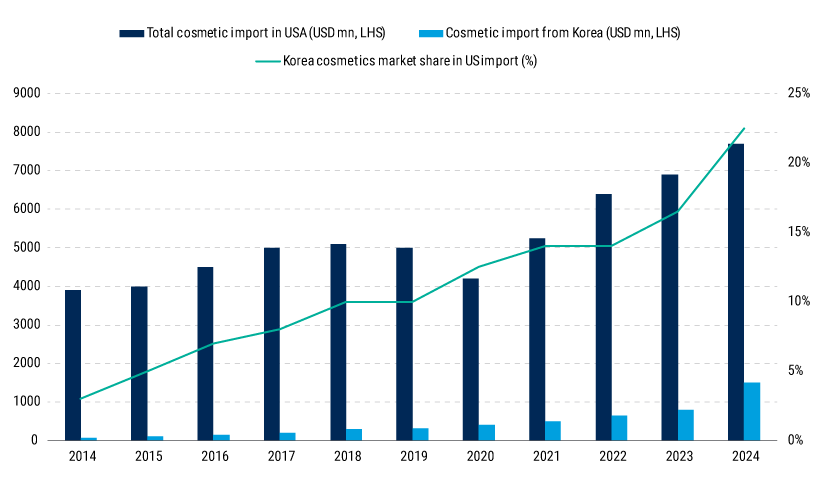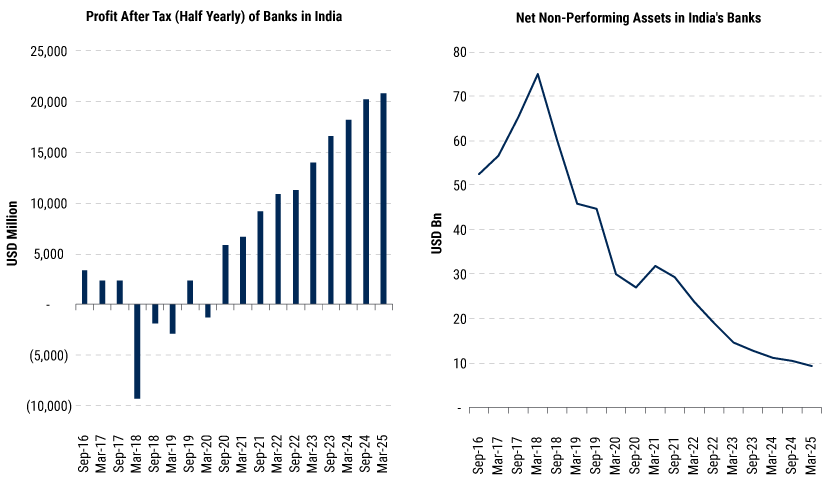2025 Midyear Asia Equity Outlook: Tackling Uncertainty, One Quality Stock at a Time

Elizabeth Soon, CFA
Head of Asia ex-Japan Equities

Midori Katsumi
Portfolio Manager, Head of Japan Small Cap Equities

Yukihiro Iwasaki
Portfolio Manager, Japan Equities

Simon Tsoi, CFA, FRM
Portfolio Manager, Asia ex Japan Equities

Huzaifa Husain
Head of India Equities

Priyasha Mohanty
Equity Product Specialist
Volatility in 2025 has presented opportunities for investors willing to look beyond broad indices and take a differentiated view across Asian markets, where we view quality companies with resilient, domestically anchored business models as well positioned to weather external shocks.
Despite US trade tensions, we continue to find selective opportunities in China, where domestic consumption trends remain encouraging – demand for local travel is strong, electric vehicle sales held up well in the first half, and the development of AI is also driving investment in data centers and computing infrastructure, creating durable demand in related sectors.
India appears better positioned in US trade negotiations given its net importer status and the exemption of key exports, like software services and pharmaceuticals. Healthy price corrections in many stocks since September 2024, especially in small-cap names, along with volatile conditions in the markets, are providing attractive opportunities to deploy capital in Indian equities.
Taiwan has quickly emerged as a global AI hub by leveraging its well-established, long-standing, and mature integrated supply chain, which spans the range from semiconductor design to hardware manufacturing. Korean defense companies are seeing growing demand amid rising geopolitical tensions and a multinational wave of increased defense spending.

Global markets remained volatile and reactive in the first half of 2025, mirroring heightened geopolitical tensions as investors maintained caution.
While visibility has improved marginally since the introduction of new US tariffs in early April – under the so-called “Liberation Day” framework – investor sentiment continues to be shaped by uncertainty around the trajectory of trade and cross-border capital flows.
Yet this volatility presents opportunity, particularly for investors willing to look beyond broad-based indices and take a more differentiated view across Asian markets. Quality companies with resilient, domestically anchored business models are well positioned to weather external shocks. While their dependence on global trade is limited, their exposure to structural demand drivers within Asia remains intact.
We continue to favor a selective, fundamentals-driven approach – which offers long-term investors exposure to nimble, high-growth companies benefiting from different structural growth drivers. These firms not only help define the future of key industries but also tend to benefit from pricing power, operational flexibility, and strong balance sheets, enabling them to manage input cost pressures more effectively.
Our emphasis on bottom-up fundamentals allows us to remain anchored amid short-term macro noise. Rather than positioning portfolios around binary macro outcomes, we seek to identify high-quality businesses whose valuations are dislocated from their long-term earnings potential – often due to the prevailing risk-off environment. This creates a compelling entry point for investors looking to access durable alpha in the region through the remainder of 2025.
China: Blocking out the noise to find future-ready winners
Hong Kong’s equity market emerged as one of the outperformers in Asia in the first half of 2025. Performance was led primarily by the tech sector, boosted by optimism around DeepSeek and broader advancements in artificial intelligence within China. This wave was further supported by a combination of proactive fiscal initiatives, accommodative monetary policy, and strong export growth.
While this momentum briefly stalled in April following the US “Liberation Day” tariff announcements, triggering renewed concerns around US-China trade relations, market sentiment has since improved. The rebound of the Hang Seng Index in May and June suggests that the market has priced in a positive scenario for the trade and tariff negotiations, economic development, and policy support from Beijing.
China’s economy has likely felt the change in stance on US tariffs more acutely than anywhere else in the world. We see some signs of slowing, in areas such as bank loans, property transactions, and auto sales. Plus, with some exporters front-loading demand, we see a risk of moderation in the economy in the second half of 2025. However, at this stage of the economic cycle, we do not expect these concerns to spur a sharp downturn. The economy remains resilient in numerous areas, and further policy support is likely to aid a recovery in domestic demand.
We continue to find selective opportunities. Domestic consumption trends remain encouraging – demand for local travel is strong, and electric vehicle sales held up well in the first half. The ongoing development of AI in China is also driving investment in data centers and computing infrastructure, creating durable demand in related sectors.
Despite ongoing macro uncertainty, we see room for optimism through a selective, fundamentals-driven lens – particularly in areas of domestic strength and structural growth, and especially when valuations remain competitive.
Taiwan and Korea: Playing the AI card to its full potential
As excitement about the future of AI gains momentum, Taiwan has quickly emerged as a global AI hub by leveraging its well-established, long-standing, and mature integrated supply chain, which spans the range from semiconductor design to hardware manufacturing. Coupled with its world-class engineering talent, Taiwan is uniquely positioned to support advanced AI infrastructure, including high-performance computing and next-gen chip development.
Within the AI opportunity set, we generally prefer the AI supply chain to US cloud service providers. Leading technology firms are increasingly recognizing that using their own computing power and designing their own specialized AI chips for internal workloads yields a higher return on investment than compute power leasing. Further, as the industry shifts more toward inferencing rather than training, cloud service providers (CSPs) are expected to increase their investment in customized AI chips, which should support continued strong demand across the hardware supply chain.
While we acknowledge the risk of a correction in the tech cycle in the second half of 2025, our focus remains on companies with structural growth drivers that can sustain healthy growth amid a potential moderation in demand. We see enterprise (B2B) demand as more resilient than consumer (B2C) in a softer macro environment, where exposure to server and networking component suppliers stands to benefit. For instance, a leading CPU socket manufacturer in Taiwan will continue to benefit from ongoing server platform upgrades, which are driving higher content value, alongside growth supported by production capacity expansion. Similarly, a Taiwanese CCL (copper-clad laminate) manufacturer continues to gain from material upgrades in server and networking equipment, while also making progress in penetrating higher-end customer segments – which is helping to offset competitive pressure in lower-margin areas.
On the other hand, while original equipment manufacturers (OEMs) have come under pressure amid investor concerns over their vulnerability to US trade policy, we believe efficient players with scale and operational agility are positioned to gain market share over time – even if they operate at lower margins in the near term. In this context, we remain positive over the longer term on companies that enable greater product innovation, customization, and production efficiency across the supply chain.
In Korea, meanwhile, the possibility of finding unique mispriced opportunities in the AI sector will likely materialize via regulatory reforms to boost innovation and expanded power infrastructure to support large-scale AI computing. At the same time, Korea appears to be emerging as a beneficiary of broader geopolitical shifts. Amid rising global political tensions and a wave of increased defense spending across many nations, Korean defense companies are seeing growing demand for their services. Separately, Korean consumer brands – particularly in cosmetics and staples like instant noodles – are making notable inroads into the US market, gaining market share despite tariff headwinds.
Korea's Market Share in US Cosmetics Imports Has Been Increasing

Source: UN Comtrade, as of 31 March 2025.
ASEAN: Sticking close to home
Similar to many of their peers, ASEAN’s equity markets saw notable volatility after declining sharply in the wake of the US tariff announcements. But as the prospects for escalating trade tensions with key partners subsided, the perceived risk of major supply chain disruptions and export pressures moderated, helping to restore investor confidence.
We see some encouraging signs that shareholder returns may be improving in certain areas, with some companies shifting their objectives by divesting non-core assets and concentrating on core operations. This capital reallocation is aimed at improving efficiency and returns, with many companies using the proceeds to reinvest in key business areas or to increase dividends, reflecting a shift toward stronger capital discipline and shareholder focus.
Looking forward, as the region enjoys resilient domestic demand, currency stability, and supportive structural reforms, we are constructive on domestic-oriented businesses aligned with long-term growth themes. Infrastructure, consumption, and digital transformation in particular offer attractive opportunities despite near-term global headwinds. Data center requirements, for instance, are driving demand for infrastructure solutions, benefiting select companies within the industry in this region.
India: Strong fundamentals support sustainable earnings
India’s macroeconomic backdrop remains strong, with GDP growth at 7.4% and inflation under control, boosting investor confidence. The central bank has supported growth by holding off on stringent regulatory proposals and easing interest rates. These accommodative policies, along with healthy corporate balance sheets and falling commodity prices, are expected to drive a recovery in margins and investment activity.
India also appears better positioned in ongoing US trade negotiations, given its net importer status and the exemption of key exports like software services and pharmaceuticals from tariffs. Falling global commodity prices following the tariff announcements are expected to benefit India’s import-heavy economy. While recent earnings from non-banking firms were muted, deflationary trends could lift margins in the coming quarters. Banks continue to report strong profitability, with clean balance sheets and room for credit growth as the investment cycle gains momentum.

Source: Reserve Bank of India, as of 31 March 2025.
Domestic flows also remain resilient, and foreign investors have started returning after being sellers for a good part of the current calendar year. The government policy environment is extremely supportive of accelerating manufacturing, especially in critical industries, and we are seeing early positive results that should gain steam in the times to come.
Despite global uncertainties, Indian equities have seen strong value creation in the post-Covid era. In the past few years, India’s corporate sector has witnessed significant growth in market capitalization, profits, and capital expenditures despite periods of volatility. Our comprehensive proprietary data analysis indicates that underlying profits and capex spending continue to grow, and companies are eager to invest to meet domestic and global demand.
On the valuation front, we have seen a healthy price correction in many stocks since September 2024, especially in small-cap names, providing reasonable opportunities to deploy capital. While the markets have now nearly regained their previous highs in local currency terms, we note that nearly a year has passed in the interim and that these valuations are backed by earnings this time. An investment strategy focused on companies with impressive earnings power and reasonable valuations has stood the test of time, and we plan to continue on this path. Current volatile conditions in the market provide attractive opportunities for deploying capital.
Japan: Structural reforms and domestic resilience take center stage
In an economy that has become synonymous with stability, we expect to see a gradual recovery through the rest of 2025. The same goes for the Japanese stock market, which remained almost flat during the first half of the year after seeing some volatility after “Liberation Day.”
Domestic equities are underpinned by strong structural support – most notably, ongoing corporate governance reforms and the accompanying enhancement of shareholder returns. Further, the Tokyo Stock Exchange’s plan to reduce the number of TOPIX constituents from approximately 1,700 to around 1,200 by late 2028, based on free-float market capitalization, has prompted many companies to publicly address how they intend to remain in the index. As a result, smaller-cap firms near the threshold are becoming more proactive about improving capital efficiency and shareholder engagement.
The coming months are likely to see growing demand from inbound tourism, along with labor shortages across the country. Inbound sales rose during the first half of 2025 as the numbers of foreign visitors increased – a trajectory set to continue. At the same time, while labor shortages are an issue in Japan, investors should benefit from solutions in the form of automation and IT spending.
Keeping to our convictions
All across Asia, our long history of investing has taught us that markets do not always move in tandem with fundamentals – sometimes they move faster, while at other times they lag.
This divergence creates opportunities for active investors like us. By focusing on long-term value creation, even amid short-term market fluctuations, our bottom-up stock selection process ensures that we target what we fundamentally believe are high-quality stocks that will endure over time.
Companies with compelling earnings power and reasonable valuations have been the foundation of an investment philosophy that has stood the test of time. We expect this to remain true for Asian equities in the remainder of 2025 and beyond.
For more insights into the trends moving markets in the second half of the year, see our 2025 Midyear Investment Outlook.
Disclosure
Investing involves risk, including possible loss of principal. The information presented herein is for illustrative purposes only and should not be considered reflective of any particular security, strategy, or investment product. It represents a general assessment of the markets at a specific time and is not a guarantee of future performance results or market movement. This material does not constitute investment, financial, legal, tax, or other advice; investment research or a product of any research department; an offer to sell, or the solicitation of an offer to purchase any security or interest in a fund; or a recommendation for any investment product or strategy. PineBridge Investments is not soliciting or recommending any action based on information in this document. Any opinions, projections, or forward-looking statements expressed herein are solely those of the author, may differ from the views or opinions expressed by other areas of PineBridge Investments, and are only for general informational purposes as of the date indicated. Views may be based on third-party data that has not been independently verified. PineBridge Investments does not approve of or endorse any republication of this material. You are solely responsible for deciding whether any investment product or strategy is appropriate for you based upon your investment goals, financial situation and tolerance for risk.



